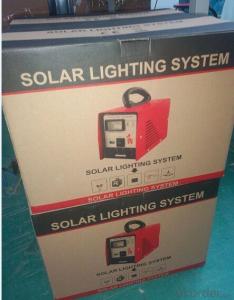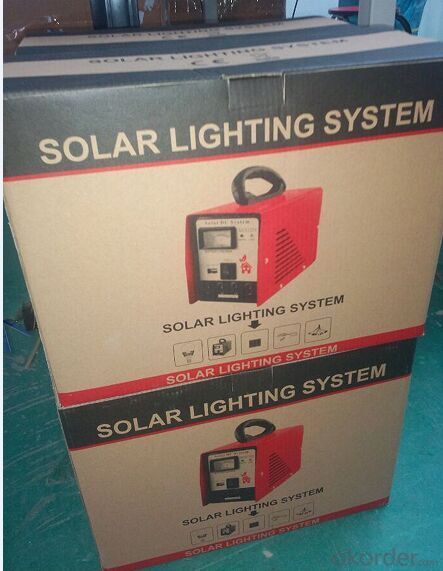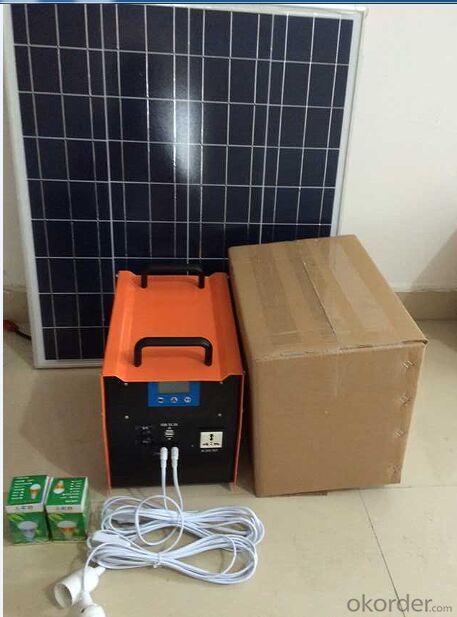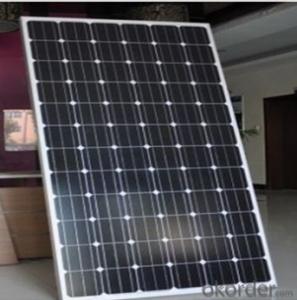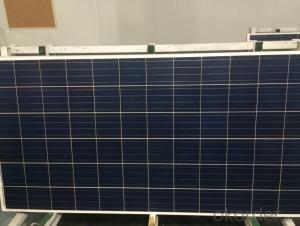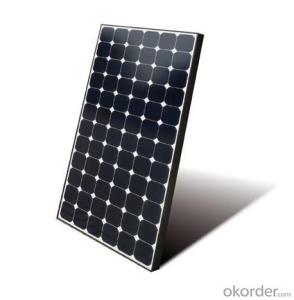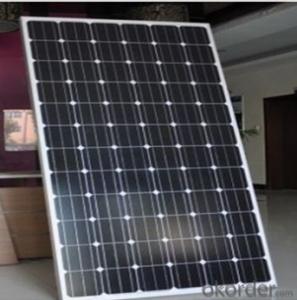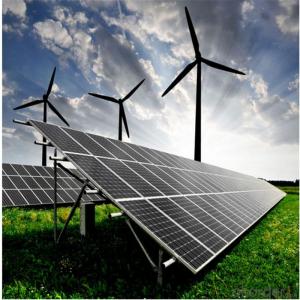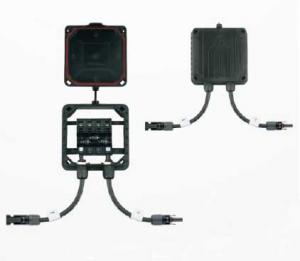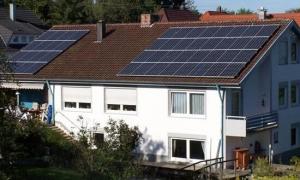500w Solar Energy Systems Home Solution Approved by TUV UL CE
- Loading Port:
- China main port
- Payment Terms:
- TT OR LC
- Min Order Qty:
- 1 pc
- Supply Capability:
- 100 pc/month
OKorder Service Pledge
OKorder Financial Service
You Might Also Like
Specification
500W Solar Home Solution Approved by TUV UL CE
Production description
PV array:
Convert sunlight instantly into DC electric power. Formed by the solar modules (also called photovoltaic
modules) in accordance with the system requirements for series and parallel.
Solar charge controller:
A charge controller may be used to power DC equipment with solar panels. The charge controller
provides a regulated DC output and stores excess energy in a battery as well as monitoring the battery
voltage to prevent over charge or over discharge. An inverter can be connected to the output of a charge
controller to drive AC loads.
Inverter:
Converts DC output power of photovaltaic soalr panels into standard AC power for use in the local off-grid
electrical network. It is a critical component in a photovoltaic system, allowing the use of ordinary
commercial appliances.
Battery banks:
Stores energy when there is an excess coming in and distribute it back out when there is a demand. Solar
PV panels continue to re-charge batteries each day to maintain battery charge.
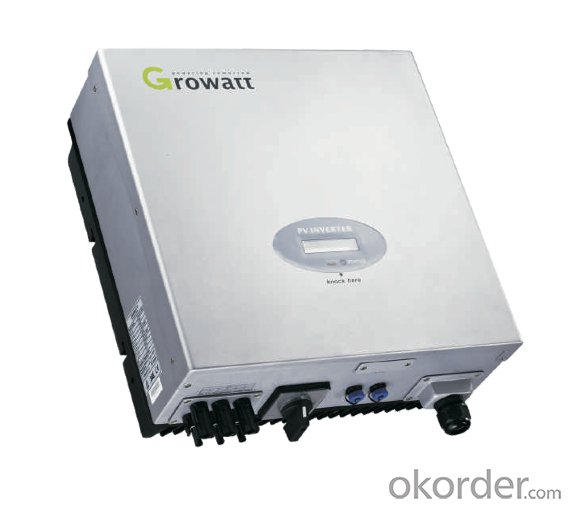
Feature
1.High conversion efficiencies resulting in superior power output performance.
2.Outstanding power output even in low light or high temperature conditions
3.Optimized design for ease of soldering and lamination
Physical characteristic
1. Rigorous quality control meets the highest international standards.
2. High-transmissivity low-iron tempered glass, strong aluminium frame.
3. Using UV-resistant silicon.
- Q: How do solar energy systems impact energy access in developing countries?
- Solar energy systems have a significant positive impact on energy access in developing countries. These systems provide a clean and sustainable source of electricity that is often more affordable and reliable than traditional fossil fuel-based options. By harnessing the abundant sunlight, solar power enables communities to gain access to electricity in remote areas where grid infrastructure is limited. This improves the quality of life by powering homes, schools, and healthcare facilities, while also stimulating economic growth and reducing carbon emissions. Overall, solar energy systems play a crucial role in expanding energy access and promoting sustainable development in developing countries.
- Q: Can solar energy systems be used in areas with limited roof space due to chimneys or vents?
- Indeed, solar energy systems can still function effectively in areas where roof space is restricted due to chimneys or vents. Although solar panels typically require unobstructed roof space to achieve optimal efficiency, there are alternative solutions accessible for areas with limited roof space. One feasible approach involves installing solar panels on adjacent flat or sloped surfaces, such as the ground or a nearby wall. These ground-mounted or wall-mounted solar systems can be adjusted to maximize exposure to sunlight, ensuring that the panels generate a substantial amount of energy. Another solution entails utilizing solar technologies specifically designed for limited roof space. For instance, solar tiles can be seamlessly integrated into the roof itself, replacing conventional roofing materials while simultaneously harnessing solar energy. These solar tiles can be installed around chimneys, vents, or any other obstructions on the roof, efficiently utilizing the available space. Furthermore, solar energy systems can be combined with other renewable energy sources, such as wind turbines or geothermal systems, to compensate for the limited roof space. By diversifying the sources of renewable energy, it becomes possible to meet the energy requirements of an area even with restricted roof space. In conclusion, despite the challenges posed by limited roof space due to chimneys or vents, there are still viable options for employing solar energy systems. By exploring alternative mounting options, utilizing solar tiles, or combining solar with other renewable energy sources, it becomes feasible to harness solar power in areas with restricted roof space.
- Q: Can solar energy systems be used in remote areas?
- Yes, solar energy systems can be used in remote areas. In fact, solar energy is particularly advantageous in remote locations as it provides a reliable and sustainable source of power without the need for extensive infrastructure or access to a traditional electricity grid. Solar panels can be installed in remote areas to generate electricity from the abundant sunlight, allowing for the provision of clean energy to power various applications such as lighting, water pumping, telecommunications, and even small-scale industrial activities. Additionally, advancements in solar technology and energy storage systems have made it possible to harness and store solar energy even in areas with limited sunlight, further expanding the potential for solar power in remote regions.
- Q: How does the orientation of solar panels affect their performance?
- The performance and efficiency of solar panels are greatly influenced by their orientation. To maximize the amount of sunlight they receive throughout the day, it is ideal for solar panels to directly face the sun. Typically, solar panels are installed on rooftops or mounted on frames, allowing them to be adjusted to the desired angle. The optimal orientation depends on factors such as the geographical location, season, and time of day. When solar panels are angled towards the sun, they are able to capture the maximum amount of sunlight, resulting in higher efficiency. Conversely, if their orientation is not proper, they will receive less sunlight and produce less electricity. In the northern hemisphere, solar panels are commonly installed facing south in order to capture the most sunlight throughout the day. Conversely, in the southern hemisphere, solar panels are oriented towards the north. This orientation allows the panels to receive sunlight for the longest duration during the day. The tilt angle of solar panels also affects their performance. Typically, the ideal tilt angle is equal to the latitude of the installation location. However, this angle can be adjusted to optimize energy production in different seasons. For example, in winter, the panels can be tilted at a steeper angle to capture more sunlight, while a shallower tilt angle in summer can prevent overheating. Improperly oriented solar panels can significantly reduce their performance, resulting in lower energy output. Therefore, it is crucial to consider the orientation and tilt angle when installing solar panels to ensure maximum efficiency and optimal energy production.
- Q: Can solar energy systems be used for powering wastewater or sewage treatment plants?
- Yes, solar energy systems can be used for powering wastewater or sewage treatment plants. Solar energy can be harnessed through the use of solar panels or solar thermal systems to generate electricity or heat, which can then be used to power various processes in these treatment plants. Solar panels convert sunlight into electricity using photovoltaic cells, which can be installed on the rooftops or open fields near the treatment plants. This electricity can be used to power pumps, blowers, and other equipment required for the treatment process. By using solar energy, these plants can significantly reduce their reliance on traditional grid electricity, leading to cost savings and a reduced carbon footprint. Solar thermal systems, on the other hand, use the sun's heat to generate hot water or steam. This heat can be utilized in the treatment process, such as for heating up water or sludge, which is essential for effective treatment. Solar thermal systems can be integrated into the existing infrastructure of the treatment plants, providing a sustainable and renewable source of thermal energy. In addition to reducing operational costs and environmental impact, solar energy systems also offer the advantage of being decentralized and independent from the grid. This means that even in remote areas or during power outages, the wastewater or sewage treatment plants can continue to operate efficiently. Overall, the use of solar energy systems for powering wastewater or sewage treatment plants is a viable and sustainable solution that can contribute to a cleaner and more energy-efficient water management system.
- Q: Can solar energy systems be used in areas with high population density?
- Yes, solar energy systems can be used in areas with high population density. Solar panels can be installed on rooftops, buildings, and other available spaces, making them suitable for densely populated areas. Additionally, advancements in solar technology and the ability to install solar farms outside urban areas can help meet the energy demands of densely populated regions.
- Q: Can solar energy systems be used for powering electric vehicles?
- Yes, solar energy systems can be used for powering electric vehicles. Solar panels can be installed on the roof of the vehicle or in a stationary location to capture sunlight and convert it into electricity. This electricity can then be used to charge the vehicle's battery, reducing or eliminating the need for grid electricity. However, the efficiency and range of solar-powered electric vehicles may vary depending on factors such as solar panel size, weather conditions, and energy consumption of the vehicle.
- Q: Can solar energy systems be used in areas with limited access to solar tracking systems?
- Yes, solar energy systems can still be used in areas with limited access to solar tracking systems. While solar tracking systems can optimize the efficiency of solar panels by following the sun's path throughout the day, they are not essential for the basic operation of solar energy systems. Fixed solar panels can still generate electricity from sunlight, albeit at a slightly reduced efficiency compared to tracking systems. Therefore, even in areas with limited access to solar tracking systems, solar energy can still be harnessed and utilized effectively.
- Q: Can solar energy systems be used in areas with high humidity?
- Yes, solar energy systems can be used in areas with high humidity. While high humidity can affect the efficiency of solar panels to some extent, modern solar technology is designed to withstand various weather conditions, including high humidity. Additionally, regular maintenance and cleaning of the panels can help minimize any negative impact on their performance.
- Q: Can solar energy systems be installed on flat roofs?
- Yes, solar energy systems can be installed on flat roofs. In fact, flat roofs are often ideal for solar panel installation as they offer a larger surface area for placement and are easily accessible for maintenance. Additionally, there are various mounting options available specifically designed for flat roofs to ensure the optimal positioning and efficiency of the solar panels.
Send your message to us
500w Solar Energy Systems Home Solution Approved by TUV UL CE
- Loading Port:
- China main port
- Payment Terms:
- TT OR LC
- Min Order Qty:
- 1 pc
- Supply Capability:
- 100 pc/month
OKorder Service Pledge
OKorder Financial Service
Similar products
Hot products
Hot Searches
Related keywords
